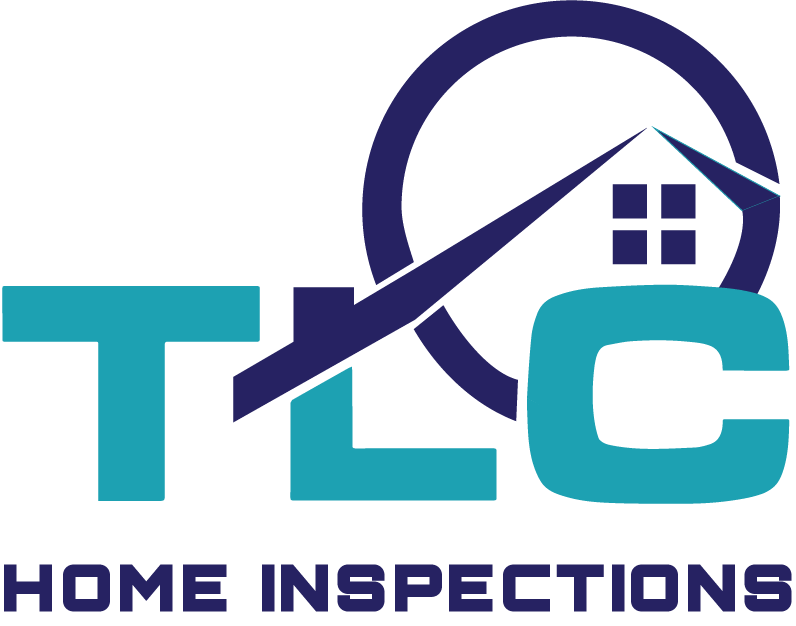At TLC Home Inspections we understand sales. Sales is all about presentation so remember that when you are trying to make your home ready to show to potential buyers. Dirty and unorganized does not sell well or for top dollar. People want to buy something that gives the appearance that it has been loved and maintained.
Records about repairs, regular maintenance, additions, or other information about the house are great to pass on to buyers as well. People want to have information about what they are buying.

I recommend you start a 3 ring binder with any and all documents you have about the house including the manuals for appliances, air conditioning and heating service work or maintenance, any pest control services, receipts and plans for irrigation systems or pools, and any updates that have been made to the house. Even if you decide not to use the binder as a tool during showings, it does make buyers feel more comfortable about their decision to purchase if they know you have the information and it’s organized. This can lead to fewer questions, concerns, and even avoid an opt out of the sale.
Here is a partial list of easy things to check around the house before hitting the market and having a home inspection. Any items that need attention can be addressed ahead of time rather than waiting for a buyer inspection to find them. When items are identified in the inspection process and need repair they will have to be addressed by a licensed professional in that field (ie. plumber, electrician). The advantages to knowing this information ahead of time are: being able to get multiple bids on the cost of repair, being able to make a decision based on the facts and numbers on your time frame, and many of these items can be addressed by a good qualified handyman instead of a licensed professional in the field.
Once there is a contract in place and an inspection has happened these decisions tend to be made with emotion. The buyers typically ask for more than what is actually required to fix the issue and the short option period puts pressure on you to make a quick decision. Having this information ahead of time can save you money and help you be more at peace with the process. There will be fewer surprises. The four major areas most buyers are concerned about include foundation, roofing, HVAC equipment, and plumbing concerns.
Notable Items:
Replace all burned out light bulbs even in appliances.
This can lead to questions about a possible electrical problem. Operate all wall switches checking for proper operation. If there are odd switches it is a good idea to label them for the inspection.
Replace and label return air filters.
Label them with the date they need to be changed next in red sharpie. Try to write it where it can be seen from the outside so potential buyers can see that you are caring for the home. Most filters are 30-45 day filters. Dirty filters will cause the system to perform poorly.
Gas fired appliances.
Gas fired water heaters and furnace units have exhaust flue vents that should exit thru the roof. These metal vents should have a minimum of 1″ clearance to anything combustible like the wood roof decking or framing members. This is usually only able to be viewed from the attic space.
Trim bushes away from the house at least 8″-10″.
Trim tree limbs away from the roof and roof structure at least 3′. Bushes and shrubs touching the house can create moisture issues along the foundation and habitats for critters that seek shelter. Tree limbs can damage the gutters, roof structure, and roof covering materials including shingles and tiles.
Seal any wall penetrations at the exterior walls with a good exterior sealant material.
Examples include hose bibs, A/C lines, and around windows where mortar or caulk is separated.
Sinks
Fill to the overflows checking for proper operation and drain them checking for leaks under the sink with a flashlight. Look for drips on the cabinet floor as well. Hot water should always be on the left at all plumbing fixtures.
Hydro message therapy tubs.
Operate tubs for 20 minutes and run a small amount of bleach in the water if not used often, to clean the system. Tub should be GFCI protected by an outlet or a breaker. The reset outlets are typically found in the water closet, master closet or the breaker will be in the electrical panel and have a test button on it. These tubs should have an access panel to get under the tub for motor/pump repairs or replacement. Look under tubs during, after running, and while draining for any signs of a leak. Leaks are common in these tubs.
Commodes.
Check that they are secured to the floor and do not rock or slide. Flush several times and look for any leaks at the water line connection and the tank and bowl connecting bolts.
GFCI protection.
GFCI protection should be found in all of the following areas: garage, laundry room if a sink is present, exterior outlets, bathrooms, and kitchen area. Use a simple outlet tester with a button for testing GFCI protection to verify this condition. Testers can be found at most hardware or home improvement stores.
Smoke detectors.
Test detectors and replace any old batteries. Detectors should be located in every bedroom, the hallways leading to the bedrooms, and on every level of the home. Current building codes require that the detectors be hard wired into the electrical panel and be interconnected so that if one goes off they will all go off. This is not generally found in older properties. Recommend at least making sure there are detectors in the proper areas even if they are the battery operated units.
Windows.
Windows should open and close smoothly and stay open when released. Screens should be free of rips and tears. If you decide to remove the screens for showing purposes, label them starting at one corner of the house and working your way around. Using painters tape across the corner of each screen for labeling will make replacing them much easier when the buyer asks for them to be reinstalled. Recommend cleaning them and making a neat stack in the garage or where they can be seen. Clean windows well and look for signs of thermal pane failure. This will look like a haze between the two panes of glass that you are unable to wipe away. It may also look like very small snowflakes or snow drifts. There are ways to deal with this beyond replacement of the panes.
Walls and Ceilings.
Walk thru the house with a flashlight and the lights off and look for any signs of moisture stains or water leaks. Check the ceilings, the walls, and along the base boards for any discoloration or swelling of the materials. It is a good idea to do the same in the attic. View as much of the attic as possible with a good flashlight from the decked surface only. Be sure to look at the underside of the roof decking for any signs of moisture intrusion/discoloration especially around protrusions in the roof.
Foundation.
Have you had any foundation issues? Were they addressed? Look for signs of structural movement including cracks in the exposed concrete floors, cracking in drywall that is not normal separation of the tape and float, cracking in the exterior cladding of the house, or doors and windows that bind or rub. Cracks in the exposed concrete floor that may cause concern are typically winder than the width of a penny or have differential movement where one side is higher than the other. Cracks in the drywall that may cause concern have uneven separation or are diagonal where the drywall has broken.
Roofing.
Have a roofing company out to walk the roof to be sure there are no major issues here. Many roofing companies will come out and walk the roof for free. Be aware they are in business to sell roofs so you may need more than one opinion. If there is storm damage or scuffing from tree limbs you want to know this ahead of time so you can make a plan to deal with it. Simple things that get noted on many reports are unpainted PVC plumbing vents, damaged vent jacks or flashings, exposed fasteners needing roofing caulk, or deteriorated materials around the chimney structure. Also recommend cleaning out gutters and valleys of leaves and debris.
HVAC.
If you do not have regular service on your equipment it is recommended that you have the systems serviced prior to listing the property. Aging systems can create many questions. If they have been serviced and have documentation to that fact it will make buyers more at ease. Many HVAC companies will do a maintenance checkup on the system for $100-$175 per unit. This is money well spent if the system is over 10 years old. They should also check the duct work which we find separated or in need of repair in many homes.
Access.
Make sure there is clear access to water heaters, HVAC equipment, electric panels, and attic access openings including any crawlspaces. Inspectors will not move your personal belongings. If an inspector cannot access something they cannot inspect it and that will lead to more questions or time and money. Unlock any areas that may need to be inspected like exterior electric panels, attic access doors, exterior storage closets, or exterior gates.
Pets.
Remove or at least kennel all loose pets the day of the inspection so they do not hinder the process or escape during the inspection. Doors and windows will be opened and shut several times at inspection.
If you have further questions about any of these items or anything else with your home, please contact our office at (512) 515-3686 or check out our resource page.










